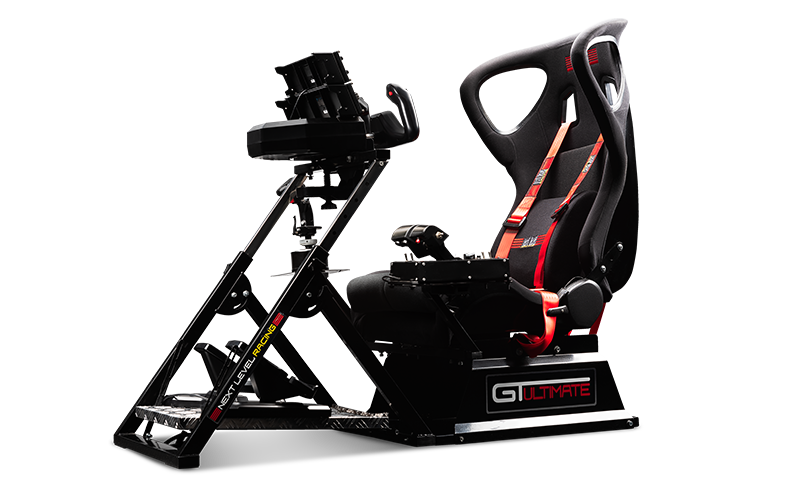A motion simulator or motion platform is a mechanism that creates the feelings of being in a real motion environment. In a simulator, the movement is synchronized with a visual display of the outside world (OTW) scene. Motion Simulator for aircraft simulators are at the high end, plus some of the more expensive amusement park rides that use a simulator-type motion base; arcade amusement devices are in the middle, and motion platforms for home use are low-cost but not as capable of the higher-level devices.
The Next Level Racing® Motion Platform V3 is designed and engineered to be the most advanced professional consumer platform on the market and based on feedback we are certain it can outperform professional platforms far greater in price. The platform is a product forged from years of simulation expertise combined with world leading European motion and software engineers at Motion Systems. The Next Level Racing Motion Platforms are not only used by sim racers from around the world but also leading universities, military defense, training institutions and professional drivers/pilots.

Motion platforms are commonly used in the field of engineering for analysis and verification of vehicle performance and design. The ability to link a computer-based dynamic model of a particular system to physical motion gives the user the ability to feel how the vehicle would respond to control inputs without the need to construct expensive prototypes. For example, an engineer designing an external fuel tank for an aircraft could have a pilot determine the effect on flying qualities or a mechanical engineer could feel the effects of a new brake system without building any hardware, saving time and money.
Flight simulator is also used by aircraft manufacturers to test new hardware. By connecting a simulated cockpit with visual screen to a real flight control system in a laboratory, integrating the pilot with the electrical, mechanical, and hydraulic components that exist on the real aircraft, a complete system evaluation can be conducted prior to initial flight testing. This type of testing allows the simulation of "seeded faults" (i.e. an intentional hydraulic leak, software error, or computer shutdown) which serve to validate that an aircraft's redundant design features work as intended. A test pilot can also help identify system deficiencies such as inadequate or missing warning indicators, or even unintended control stick motion. This testing is necessary to simulate extremely high risk events that cannot be conducted in flight but nonetheless must be demonstrated. While 6 degree-of-freedom motion is not necessary for this type of testing, the visual screen allows the pilot to "fly" the aircraft while the faults are simultaneously triggered.
For More Information Click Here >> Racing Simulator
|

